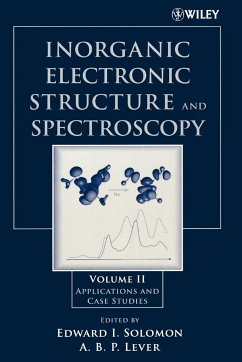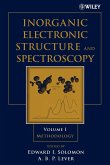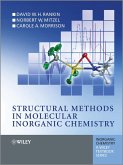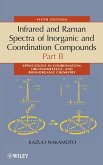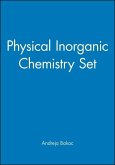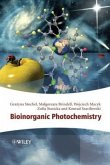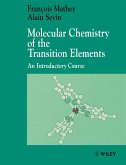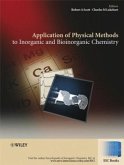Volume II strongly complements Volume I, in that the first half applies the concepts of Volume I to important areas in inorganic chemistry: bioinorganic chemistry, electron transfer, mixed valent compounds, electrochemistry and photochemistry.
-Journal of Chemical Education
This newly available paperbound edition of Inorganic ElectronicStructure and Spectroscopy includes all the material from theoriginal clothbound edition published in 1999. Consisting ofarticles contributed by outstanding scientists from around theworld, Volume II, Applications and Case Studies represents thestate of the art in this field, written in a style accessible tothe well-read senior undergraduate, and yet still of superior valueto the senior researcher.
The second of a two-volume set, Volume II explores variouscompounds of interest in inorganic chemistry and describes theirelectronic structures from the perspective of spectroscopicstudies. Areas discussed include:
Bioinorganic Spectroscopy
Mixed Valence
Multiple Metal-Metal Bonds
Transition Metal Nitrosyls
Electronic Structure of Heme Sites
Spin Transition in Iron (II) Compounds
Neutron and Optical Spectra of Magnetically OrderedCrystals
This work assumes a basic understanding of quantum chemistry andgroup theory. Although written by multiple contributors, theeditors holistic approach to the manuscript has ensured a uniformpresentation.
Hinweis: Dieser Artikel kann nur an eine deutsche Lieferadresse ausgeliefert werden.
-Journal of Chemical Education
This newly available paperbound edition of Inorganic ElectronicStructure and Spectroscopy includes all the material from theoriginal clothbound edition published in 1999. Consisting ofarticles contributed by outstanding scientists from around theworld, Volume II, Applications and Case Studies represents thestate of the art in this field, written in a style accessible tothe well-read senior undergraduate, and yet still of superior valueto the senior researcher.
The second of a two-volume set, Volume II explores variouscompounds of interest in inorganic chemistry and describes theirelectronic structures from the perspective of spectroscopicstudies. Areas discussed include:
Bioinorganic Spectroscopy
Mixed Valence
Multiple Metal-Metal Bonds
Transition Metal Nitrosyls
Electronic Structure of Heme Sites
Spin Transition in Iron (II) Compounds
Neutron and Optical Spectra of Magnetically OrderedCrystals
This work assumes a basic understanding of quantum chemistry andgroup theory. Although written by multiple contributors, theeditors holistic approach to the manuscript has ensured a uniformpresentation.
Hinweis: Dieser Artikel kann nur an eine deutsche Lieferadresse ausgeliefert werden.

